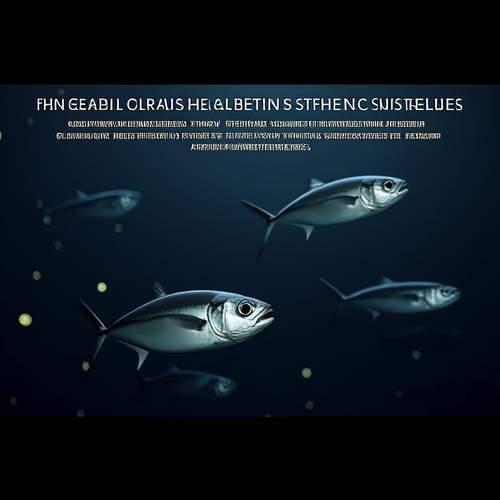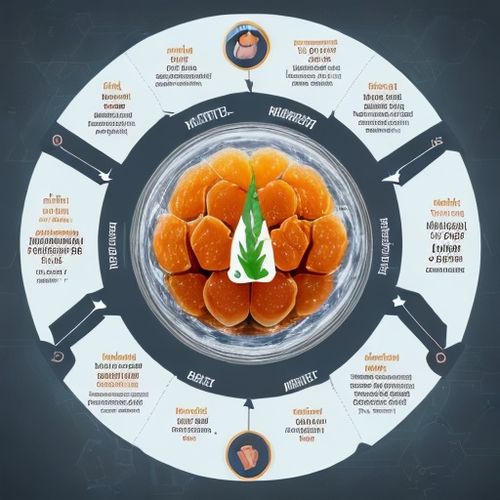The issue of methylmercury contamination in deep-sea fish has emerged as a pressing public health concern in recent years. As global seafood consumption rises and industrial activities intensify, the delicate balance of marine ecosystems faces unprecedented challenges. Methylmercury, a highly toxic organic compound, accumulates in predatory fish through a process called biomagnification, posing significant risks to human health when consumed.
Understanding the origins of methylmercury in marine environments requires examining both natural processes and human activities. While volcanic eruptions and weathering of rocks contribute naturally, anthropogenic sources like coal combustion, mining operations, and industrial wastewater discharge have dramatically increased mercury levels in oceans. This mercury transforms into methylmercury through microbial action in ocean sediments, entering the food chain where it becomes increasingly concentrated in larger, longer-lived fish species.
The peculiar characteristics of deep-sea ecosystems make them particularly vulnerable to methylmercury accumulation. Cold temperatures, slow metabolism rates, and extended lifespans of deep-water species allow for greater bioaccumulation over time. Species such as swordfish, shark, and certain tuna varieties often show alarmingly high concentrations, sometimes exceeding safety thresholds established by health organizations worldwide.
Public health implications of methylmercury exposure present complex challenges. The neurotoxin poses severe risks to fetal brain development when consumed by pregnant women, potentially leading to cognitive impairments and developmental delays. In adults, chronic exposure may contribute to cardiovascular issues and neurological disorders. These concerns have led various countries to issue consumption advisories, particularly for vulnerable populations including children and women of childbearing age.
Regulatory approaches to methylmercury control vary significantly across nations, reflecting different risk assessments and cultural dietary patterns. Some countries employ strict maximum limits for mercury in seafood products, while others focus on consumer education through detailed labeling systems. International organizations like the FAO and WHO have developed guidelines, but implementation remains inconsistent, creating confusion in global seafood markets.
Technological innovations offer promising avenues for mitigating methylmercury risks. Advanced monitoring systems now enable real-time tracking of mercury levels in fishing grounds, while novel processing techniques show potential for reducing mercury content in harvested fish. Researchers are also exploring dietary supplements that could potentially block mercury absorption in humans, though such approaches remain in experimental stages.
The fishing industry faces mounting pressure to address methylmercury concerns while maintaining sustainable practices. Some fisheries have implemented location-specific harvesting protocols, avoiding areas with known high mercury accumulation. Aquaculture operations increasingly monitor feed composition to prevent introducing additional mercury into farmed fish. These measures, while helpful, require substantial investment and industry-wide cooperation to achieve meaningful impact.
Consumer awareness plays a pivotal role in managing methylmercury exposure. Public health campaigns emphasizing species selection and consumption frequency have proven effective in some regions. The development of smartphone applications providing personalized consumption advice based on individual health profiles represents an innovative approach to risk communication. However, misinformation and conflicting dietary advice continue to complicate consumer decision-making.
Climate change introduces additional complexities to the methylmercury equation. Rising ocean temperatures may alter mercury methylation rates and change fish migration patterns, potentially creating new contamination hotspots. Melting permafrost releases historically trapped mercury into waterways, while changing precipitation patterns affect mercury deposition. These environmental shifts demand adaptive monitoring strategies and flexible regulatory frameworks.
Scientific research continues to uncover new dimensions of the methylmercury challenge. Recent studies explore genetic factors that may make certain individuals more susceptible to mercury toxicity, potentially enabling personalized consumption guidelines. Other investigations examine how ocean acidification might influence mercury uptake in marine organisms. Each discovery adds layers of complexity to an already intricate public health issue.
Economic considerations cannot be separated from methylmercury control efforts. Many deep-sea fish species command premium prices in global markets, creating tensions between public health priorities and commercial interests. Developing nations reliant on seafood exports face particular challenges in balancing economic needs with food safety requirements. International cooperation and equitable solutions will be essential for meaningful progress.
The future of methylmercury control in deep-sea fish will likely involve multifaceted strategies. Enhanced international monitoring networks, improved seafood labeling systems, and targeted consumer education all have roles to play. Technological solutions may eventually provide more direct interventions, but for now, informed consumption choices remain the primary defense against methylmercury exposure.
As research continues and awareness grows, the conversation around deep-sea fish and methylmercury evolves. What began as a straightforward food safety concern has developed into a complex intersection of environmental science, public health, and global commerce. Addressing this challenge effectively will require sustained collaboration across scientific disciplines, industries, and national boundaries.

By /May 21, 2025

By /May 21, 2025

By /May 21, 2025

By /May 21, 2025

By /May 21, 2025

By /May 21, 2025

By /May 21, 2025

By /May 21, 2025

By Michael Brown/May 18, 2025

By James Moore/May 18, 2025

By Thomas Roberts/May 18, 2025

By Amanda Phillips/May 18, 2025

By James Moore/May 18, 2025

By Laura Wilson/May 18, 2025

By Emily Johnson/May 18, 2025

By Joshua Howard/May 18, 2025

By David Anderson/May 18, 2025

By Sophia Lewis/May 18, 2025

By John Smith/Apr 22, 2025

By Emma Thompson/Apr 22, 2025